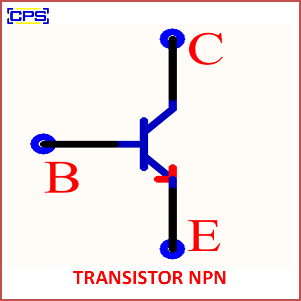An NPN Transistor is a type of bipolar junction transistor (BJT) where the arrangement of semiconductor materials is such that a layer of p-type material is sandwiched between two n-type materials. The NPN transistor is one of the most commonly used transistors in electronic circuits due to its efficient current amplification and switching capabilities.

Key Features of an NPN Transistor:
- Three Regions:
- Emitter (E): The region that emits electrons (n-type material).
- Base (B): The central region that controls the flow of electrons (p-type material).
- Collector (C): The region that collects electrons (n-type material).
- Current Flow:
- Forward Active Mode (Amplification): When the base-emitter junction is forward biased (positive voltage applied to the base relative to the emitter), electrons flow from the emitter to the base and are collected by the collector, allowing a small base current to control a larger collector current.
- Amplification:
- An NPN transistor amplifies the input current at the base to produce a larger output current at the collector, which is useful in signal amplification circuits.
Working Principle:
- When a small current flows from the base to the emitter, it allows a larger current to flow from the collector to the emitter. This results in current amplification.
- Base-emitter Junction (Forward Bias): For the transistor to operate, a small current flows from the base to the emitter, creating a current through the collector.
- Collector-emitter Junction (Reverse Bias): The collector current is controlled by the base current, allowing the transistor to act as a current amplifier or switch.
Applications of NPN Transistors:
- Switching Circuits:
- Used to turn electrical devices on or off in digital circuits.
- Amplifiers:
- Commonly used in audio and radio frequency amplification.
- Oscillators:
- Employed in generating AC signals in communication systems.
- Signal Processing:
- Used in analog circuits for processing signals by amplifying or modifying them.
Advantages:
- High Current Gain: Can amplify a small current to a much larger one, making it useful for amplification purposes.
- Fast Switching Speed: Ideal for high-speed switching applications.
- Easy to Use: Simple to implement in circuits and widely available.
Disadvantages:
- Requires Biasing: Proper biasing is needed for the transistor to operate efficiently, requiring careful design.
- Temperature Sensitivity: Performance can degrade with temperature changes.
